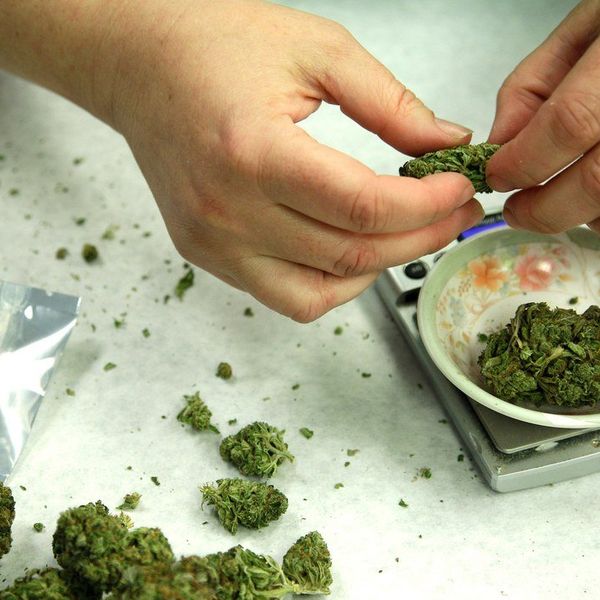In recent years, marijuana has become an increasingly hot-button issue. Almost everyone you meet has their own opinion on whether or not the discussion about marijuana deserves a place in mainstream America. But, how much time do we actually spend talking about how it became illegal in the first place? Research in recent years has shown minimal dangers and even benefits of marijuana. President Obama himself said in a speech in 2013 that “marijuana is no more dangerous than alcohol,” so why don’t we start educating ourselves about how the initial and continued prohibition of marijuana had/has nothing to do with public safety.
Back in the early 20th century, newspaper was becoming a hot medium in the United States and it seemed like everyone was starting one. Immigrants from all over the world were trying their hand at the news business. One man reigned above all of them. William Randolph Hearst was a self-made millionaire who had single-handedly taken the world by storm with his controversial business tactics and all around lavish lifestyle. During the Great Depression, everyone was feeling the effects, even the mighty William Randolph Hearst. Hearst was losing influence and readership, which meant he was losing money. He needed something to save his empire, and quick. Hearst had used his infamous “yellow journalism” to ruin careers and spread gossip, and he would do it again. William Randolph Hearst and his connections banned marijuana for their own personal gain, not for the safety of the public.
The late activist Jack Herer explains it best, ”when the new mechanical hemp fiber stripping machines to conserve hemp's high-cellulose pulp finally became state of the art, available and affordable," Hearst, with enormous holdings in timber acreage and investments in paper manufacturing, "stood to lose billions of dollars and perhaps go bankrupt." In addition to Hearst’s own interests, the DuPont Company that created chemicals and pesticides had just patented nylon and "a new sulfate/sulfite process for making paper from wood pulp.” (1) The campaign to ban the growing and use of hemp and its cousin marijuana had begun. The next step was to enlist businessman Andrew Mellon (yes, as in Carnegie Mellon University) who like Hearst, had investments in paper manufacturing. Mellon then decided to call in a favor from his niece's husband, who just so happened to be Harry Anslinger , commissioner of the Federal Bureau of Narcotics, now known as the DEA. Anslinger had previously thought of marijuana as just a minor nuisance that couldn’t be controlled because it grew in all fifty states.
At this point, Hearst all but disappeared from the fight. Although he continued to print horror stories of homicidal maniacs high on marijuana, Hearst deferred to Anslinger to convince the public of the menace sweeping the country. In order to do so, Anslinger appealed to the racist and sexist attitudes of the American people. He would proclaim that “reefer makes darkies think they’re as good as white men [and the] primary reason to outlaw marijuana is it’s effect on the degenerate races” (2). During the 1937 Congressional Hearings on the Taxation of Marihuana, Anslinger’s evidence “ consisted [solely] of newspaper clippings [presumably Hearst- owned newspapers]. Dr. William Woodward of the American Medical Association, undermined Anslinger’s testimony by pointing out that facts in those newspaper clippings:
had originated with the Commissioner himself. But the hour was late and it was time to move on. In a vote they didn’t bother to record, on a matter of little interest, a handful of Congressmen forwarded a bill that would one day fill the nation’s prisons to the roof beams.”
The Marijuana Tax Act of 1937 was the result of those hearings and the issue was not revisited until the 1950’s.
In the 1950’s the drastic claims of homicidal maniacs and overly-sexualized teens had long been discredited. Instead Harry Anslinger told Congress a totally different story. Now he said that it should be illegal because it caused mellowness and apathy. He said the Communists would try to use it against our youth in an attempt to corrupt America. Long after the reigns of William Randolph Hearst, Andrew Mellon and Harry Anslinger were over, President Richard Nixon declared a formal War on Drugs in 1971. “Forcing the drug war gravy train to spend millions of tax dollars on politicized research, trying to find harm in a relatively harmless plant.”
Over the years, the topic of marijuana has been wrapped up in the counterculture of the 60’s. Even with state laws allowing marijuana for medical use, people who rely on the plant are seen as sort of criminals. After all, “under federal law it is illegal to buy, sell, grow or possess any amount of marijuana:
anywhere in the United States. Penalties for a first offense range from probation to life imprisonment, with fines of up to $4 million, depending on the quantity of marijuana involved.”
Marijuana and hemp have been used for thousands of years as clothes, shelter, medicine, food as well as many other things.





















